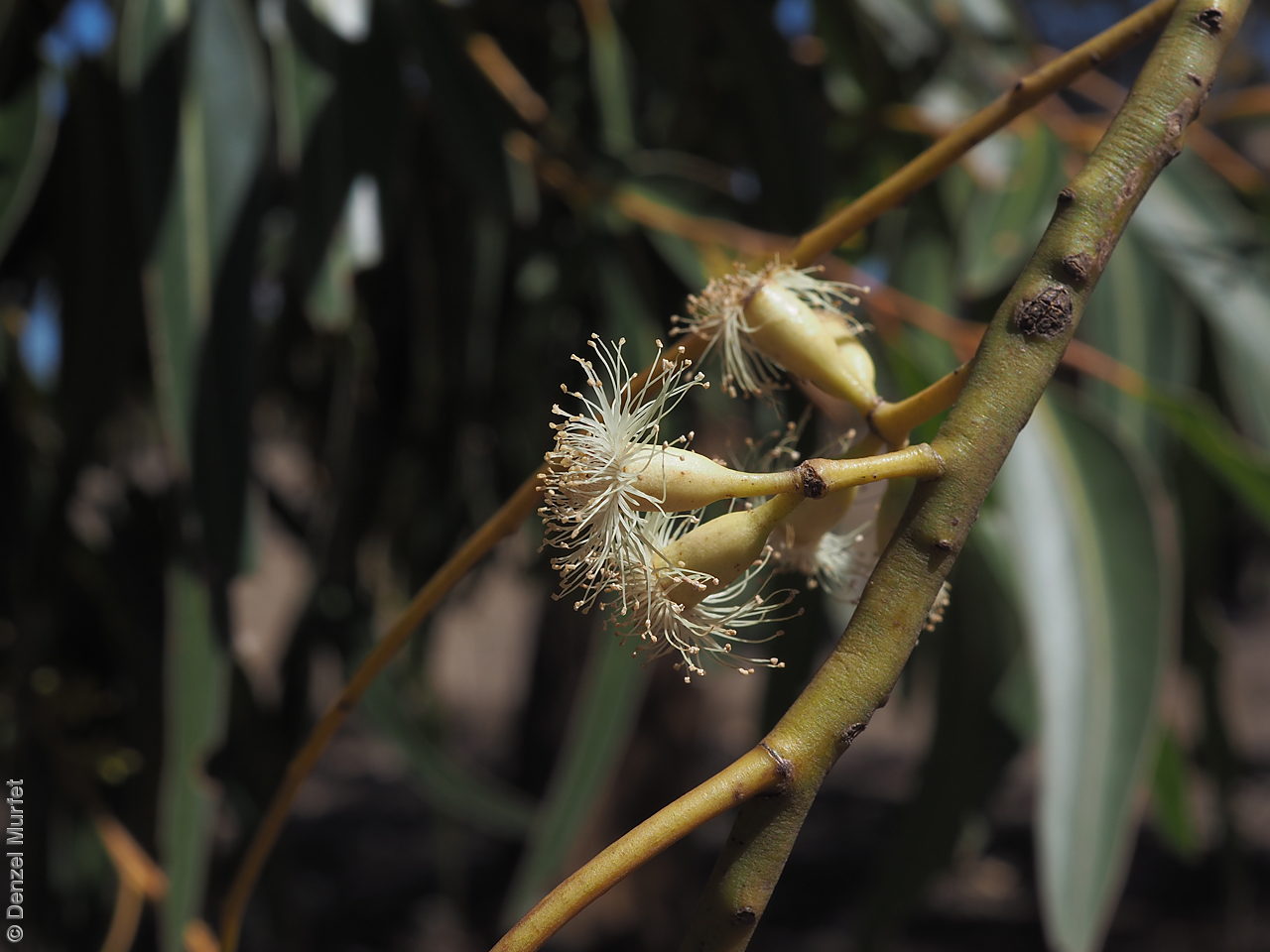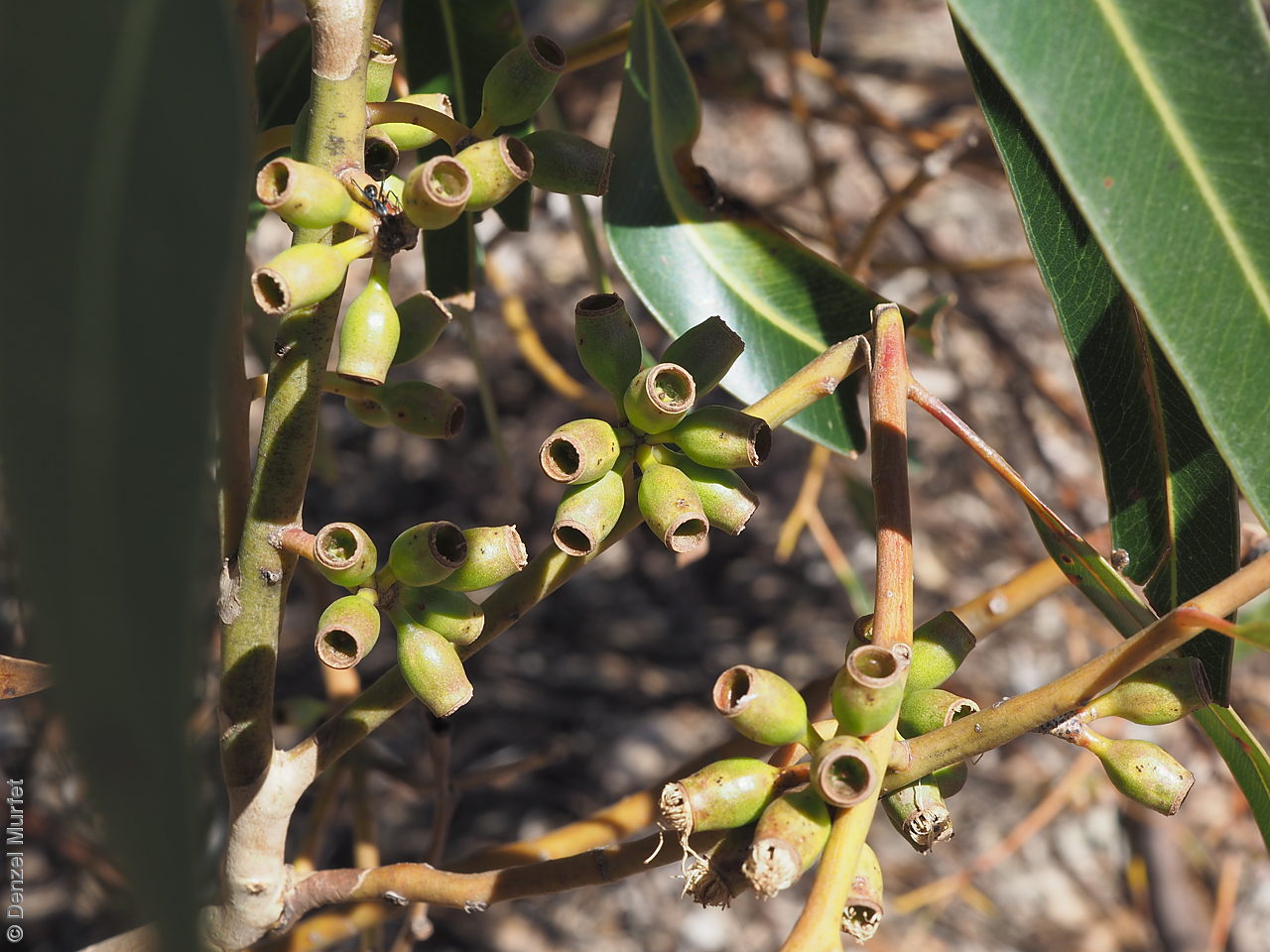

















Prior names
Eucalyptus cladocalyx, partly
Eucalyptus langii
Common names
Flinders Ranges Sugar Gum
Sugar Gum
White Gum
Etymology
Eucalyptus from the Greek 'eu' meaning well and 'calyptos' meaning covered; alluding to the cap or lid which covers the stamens in the bud. Cladocalyx from the Greek 'clados' meaning branch and 'calyx'; alluding to the flowers that occurs on older branchlets below the leafy part of the crown. Petila from the Latin 'petilus' meaning thin or slender; referring to the subspecies tall and erect-branched habit, narrow adult leaves and narrower fruits compared to the other subspecies.
Distribution and status
Endemic to South Australia and restricted to the southern Flinders Ranges, growing hillslopes and ridges, on rocky sites or steep slopes. Native. Common in South Australia.
Herbarium regions: Flinders Ranges, Eyre Peninsula, Northern Lofty
AVH map: SA distribution map (external link)
Plant description
Single stemmed tree to 40 m tall with an erect branching habit, crown terminal and often layered. Bark smooth throughout, orange-yellow to tan, grey and cream. Adult leaves to 165 mm long and 30 mm wide, lanceolate to narrow-lanceolate, glossy, dark-green above and paler below. Flowers axillary in umbels of 7-11 flowers, held erect on leafless parts of the branchlets. Buds to 10 mm long and 5 mm wide, cylindrical to urn-shaped, bud-cap hemisperical and rounded and much shorther than the bud-base. Flowers cream appearing in summer. This subspecies is distinguished from the other two subspecies by its distribution and combination of tall, erect-branched habit, relatively narrow adult leaves and relatively small fruits. Fruits are woody, barrel to urn-shaped fruit to 10 mm long and 7 mm wide, smooth or ribbed, disc descending, valves 3 or 4 deeply enclosed below the rim. Seeds are grey-brown ovoid seed. Seed embryo type is folded.
Seed collection and propagation
Collect seeds between January and December. Collect mature fruits that are dark and hard (difficult to break with a finger nail), with the valves un-open any time of year. Leave the fruits in a breathable container in a dry room for one to two weeks. This allows the valves on the fruit to open and release the seeds. Separate the seeds by placing all the materials into a bucket and shaking it to dislodge the seeds. Pass the material through a sieve to separate the unwanted material. The finer material will contain both seeds (soft) and frass (hard) usually distinguishable from each other but can be very similar in shape and colour. With finer sieves, the seeds can be separated from the frass but this is not essential for storage or propagation. Store the seeds with a desiccant such as dried silica beads or dry rice, in an air tight container in a cool and dry place. Seeds are non-dormant, viable seed should germinate readily.